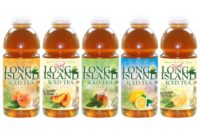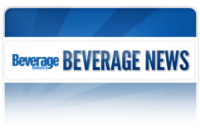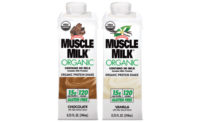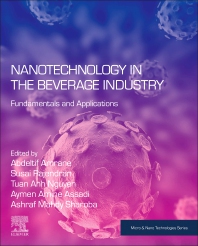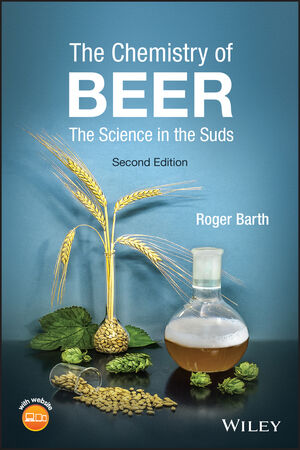Tea ingredients expand into most beverage categories
Consumers seek premium, brewed ingredients



Some consumers are interested in authentic brewed tea ingredients, says Robertet Flavors’ David Wasnak. As a result, beverage brands that have called out this authenticity on their labels have seen recent success, he notes. (Image courtesy of PepsiCo Inc.)

Tea and tea flavors are expanding their prevalence in alcohol beverages. Allen Flavors Inc. provided the tea flavors to make Devotion Vodka’s newest flavored vodka release: Tiki Tea. (Image courtesy of Devotion Spirits Inc.)




As a protest against British taxation, Samuel Adams and other colonists dumped chests of tea into Boston Harbor in what would come to be known as the Boston Tea Party on Dec. 16, 1773. However, from a beverage perspective, if someone hypothetically tasted the harbor water after the Boston Tea Party, this event could have been viewed as an early experimentation of blending tea and tea flavors in Puget Sound water.
Today, beverage-makers are experimenting with tea and tea flavors in an even wider variety of beverage categories. According to Chicago-based Mintel’s Global New Products Database, the 403 products with tea as an ingredient released between October 2013 and October 2014 spanned beverage categories such as bagged and ready-to-drink (RTD) tea, kombucha, energy drinks and shots, coffee, juices and smoothies, sparkling and enhanced waters, protein drinks and other functional beverages, carbonated soft drinks, liquid concentrates and powdered drink mixes. These releases also represent a 32 percent increase in new product launches containing tea, compared with the 2012-2013 period.
Tea is even making an appearance on upscale cocktail menus, notes Bill Smith, R&D director for beverage at Sensient Flavors, Hoffman Estates, Ill. “Gone are the Long Island iced teas, exchanged for Earl-Grey-infused gin with lemon and simple syrup or a milk-washed tea vodka with honey,” he explains. “Classic tea flavor pairings, milk, lemon and honey, inspire trendsetting libations.”
In the future, experts expect tea to move into even more beverage categories. For example, Finlay Tea Solutions US Inc. thinks teas are going to emerge in more latte and smoothie-type beverages, says Lauren Lamoureaux. “[Milk-based] coffee beverages have had huge success in the ready-to-drink market, and we think this leaves a great opportunity for teas as well,” says the technical director of the Florham Park, N.J.-based company.
Cathianne Leonardi, senior flavorist at Edison, N.J.-based Allen Flavors Inc., agrees that the dairy-based drinks category is ripe for acceptance of tea. “If one considers that bubble tea, where milk and tea are combined, is a popular drink in Asia, and this is an area of global market growth, it seems that the stage is set to begin the westernization of tea flavors in dairy products.”
Treatt also is poised to help tea grow more as an ingredient by pairing it with another trending beverage category: craft beer. “In the beverage industry, craft beer continues to soar in popularity,” explains Douglas Rash, group vice president of global sales for the Lakeland, Fla.-based company. “In this sense, beer is the beverage to watch.” Treatt offers a range of natural, from the named food aqueous distillates that can help facilitate the exploration of tea flavors in this beverage segment, he adds.
Sharing the benefits
Part of the reason tea is applicable to a wide range of beverage categories is because of the versatility of its flavor profile, according to Gary Vorsheim, vice president of extract sales at Martin Bauer Inc., Secaucus, N.J. “Tea [ingredients] in energy drinks, near-waters, milk-based drinks, beer and other beverages keep being [used], showing off tea’s ability to pair with almost any beverage,” he says. “A mild, not too astringent tea is smooth and neutral, allowing it to work with almost any flavor combination, which allows it to be used in an unlimited number of flavors and beverages.”
The other part of the tea story is the health and functional benefits it adds to beverages.
As standalone beverages, tea and RTD tea beverages have been rising in popularity as healthier beverage options, notes John H. Crandall, vice president of sales for Johns Creek, Ga.-based Amelia Bay. “Market research shows that the RTD tea segment has seen significant growth over the past five years and will see strong continued growth over the next five years," he says.
With consumers looking for healthier alternatives to carbonated soft drinks and high-calorie beverages, they are switching their consumption to teas and RTD teas, adds Angela Lantman, applications manager for coffee and tea at Synergy Flavors, Wauconda, Ill. “Consumers know that tea has its own health benefits, but the fact that tea beverages don’t have to be high in calories to taste good also helps this market continue to grow,” she says. In turn, when tea is mixed into other beverages, this health halo also is extended to the product.
Teas also impart health benefits through their antioxidant properties, notes Randal Kreienbrink, director of marketing for BI Nutraceuticals, Long Beach, Calif. This is especially true of green tea and botanical teas, Martin Bauer’s Vorsheim says. “Some are recognized as a source of antioxidants, with a free-radical scavenging function able to benefit the body,” he explains.
In addition to healthy beverage options, consumers also are looking for beverages that offer other functions outside of hydration, says Cecilia McCollum, executive vice president of Blue California, Rancho Santa Margarita, Calif.
Tea ingredients can be used to add functionality to a beverage. For example, tea can be used as a natural caffeine source for energy drinks, Martin Bauer’s Vorsheim points out. Tea blends also can serve as an alertness, sleep or digestive aid, he notes. For example, ginger extract has been known to soothe stomach discomfort, guarana can be used for energy, and chamomile and lavender can have calming and stress-relieving effects, he explains.
Only the best
As consumers become savvier about the benefits of tea, they also are becoming more knowledgeable about the quality of tea ingredients and demanding only the best.
For example, some consumers are interested in authentic, real-brewed RTD teas or at least teas that offer a brewed flavor, notes David Wasnak, associate director of marketing and consumer insights for Robertet Flavors, Piscataway, N.J. Brands that have called out this authenticity, like PepsiCo’s Pure Leaf and The Coca-Cola Co.’s Gold Peak Tea RTD iced teas, have seen recent success, he notes. The denotation of brewed tea also can help differentiate a brand’s premium tea ingredients from more budget ingredients like instant tea powder, Amelia Bay’s Crandall adds.
Consumers also are calling for tea varietals from specific origins, Sensient Flavors’ Smith says. For example, they want more than just black or green tea; they want black tea from China, Indian Ceylon or Kenya and herbal infusions of multiple different botanicals, such as mint, rosehip, chamomile and others, he explains.
Another trend in tea ingredient requests is for teas without caramel color, Amelia Bay’s Crandall says. Amelia Bay now has the technology to help customers achieve a clean, caramel-color-free label without the use of kettle brewing or instant tea powder, he adds.
In spite of all of these preferences, Martin Bauer’s Vorsheim says that, at the end of the day, the basic tea varieties still rule. “While there are a multitude of origins and types of black tea available, the bulk of black iced tea sales in the United States are not focused on a premium proposition but on an established taste profile that is based on a generic sense of what tea is supposed to taste like — in the United States, at least,” he explains. “Next, of course, is green tea, which also has a strong and deep history with a tremendous variety of origins and taste profiles, but, for the most part, it is consumed in the United States without any focus on where the tea comes from or the varietal type.”
Vorsheim says this generic view of tea is based on the bulk of tea beverages using the same type of tea ingredients, giving consumers a taste expectation. Following this, consumers care less about where the tea comes from than whether it tastes as good as they are expecting, he says.
In line with this, beverage-makers have to ensure that they choose tea ingredients that will help their products meet regional expectations of tea flavors, Treatt’s Rash says. “For example, green tea consumed in North America is quite different from that consumed in Asia,” he notes. “In order to ensure success in a given targeted market, it is vital to take regional and cultural preferences into account.”
The right taste
To ensure that teas beverages meet consumers’ taste expectations, beverage-makers sometimes have to make formulation adjustments.
For example, when brewing and bottling large batches of tea, inconsistencies can arise because of the high number of variables in the formulation, including type of water, temperature and time of brewing, Synergy Flavors’ Lantman says. By using tea flavors, beverage-makers can keep their products more consistent from batch to batch and among different brewing facilities, she explains.
In addition, tea has a natural bitter or astringent taste, which can either be masked or supplemented, Sensient Flavors’ Smith explains. “Using flavors like cranberry, lemon or grapefruit, which carry similar strong, bitter or astringent flavors, can help contextualize tea’s flavor and help it ‘make sense’ for consumers who generally dislike those flavors,” he says. “Indulgent flavors, like caramel orange or honey plum cinnamon, can actually mask certain flavor notes because of the sweet, lingering taste overlapping with the astringency.”
With these formulation opportunities opening tea ingredients up to blends with other flavors and in other beverage categories while maintaining a consistent taste experience, experts are predicting that the market for tea ingredients will continue to grow.
“What we see in the future is more tea,” Martin Bauer’s Vorsheim says. “Tea has not reached its logical potential in the U.S. market. While some of the old applications for tea have lost momentum and are not seen as a convenience anymore, there are many other new ways tea is being served to the consumer in the retail and foodservice sectors. ... We have not realized a ‘tea bubble?yet, not even close. With the inclusion of new flavors, sweeteners, herbals and new delivery methods, tea is here to stay and is making a valiant effort to be the No. 1 consumed beverage in North America.”
Looking for a reprint of this article?
From high-res PDFs to custom plaques, order your copy today!




